While some believe the Egyptians made the first hooked mats between the 3rd and 7th centuries, others suggest mat hooking began in China or Europe. It is believed that the first hand-hooked mats in North America appeared in New England, Quebec, and the Atlantic Provinces. Since early Newfoundland mats are similar to those from England; some contend the mat tradition was brought to Newfoundland by immigrants from England. There is also evidence to suggest that Scottish sailors and fishermen brought their mat traditions with them as well. The museum’s Rug Exhibit highlights various styles of traditional mats.
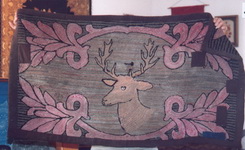 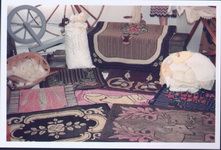 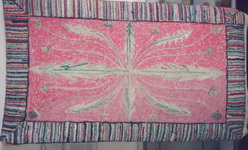
The museum is also home the oldest documented hooked rug in Newfoundland which was made by Lucy Woodford sometime during 1880-1890.
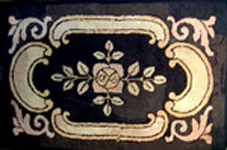
Mat making in Newfoundland has existed since the early 1800s. Our traditional hooked mats feature vibrant colours, brightly painted houses, floral and geometric designs. A very striking and popular pattern is the “hit and miss” which features striped blocks. Typically, women hooked rugs during the winter, especially February and March, when the weather was cold and harsh and the harbours full of ice. Men formed the mat frames by tying or pegging together four wooden slats. They made hooks or punches by carving wood to form handles and hammering a nail into this wood. The nail would be filed at the tip to form a hook. Generally, women constructed the mats using a variety of fabrics (usually whatever rags the individual had on hand) which were then pulled or “hooked” through burlap. These mats give a tightly woven appearance that is flat yet textured to the touch.
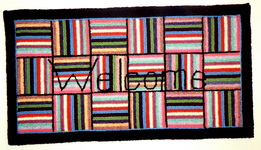
Another style of traditional mat was the Newfoundland Poked Mat also known as “Rag-a-Jack” or “Raggedy Jack.” Unlike the hooked mats, the raggedy jack was assembled by “poking” leftover cloth scraps into holes in a piece of burlap. Therefore, there was no need for a hooking tool. Rather, a piece of wood sharpened to a point was sufficient to poke the material through the burlap. Raggedy Jacks offer a more fluffy appearance and are generally thicker than their hooked mat counterparts due to the wider cloth used in the formation of the Raggedy Jack. Moreover, the patterns and details of the Raggedy Jack are not as intricate as those found in the hooked mat – although Raggedy Jacks tend to be filled with vibrant colors. A fine example of the Raggedy Jack is found in the Bedroom Exhibit at the Twillingate Museum.
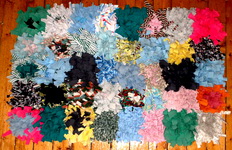
The burlap used in the making of mats often came from the “brin sacks” that were used to transport and store animal feed and vegetables. Although most Canadians refer to the material as “burlap”, Newfoundlanders commonly called this very versatile cloth “brin.” Soot from the wood stove was often used to outline a pattern on the brin, and this outline would guide the mat maker in her hooking. Old coats, pants, uniforms, curtains, linens, stockings – or any other available cloth – would be reused in the making of a mat. Thus, the recycling of materials was an important element in the creation of mats used to cover floors and create warmth.
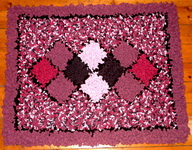
Although these mats were created out of necessity as part of the culture of early Newfoundland, the modern consumer considers both the hooked mat and the raggedy jack true works of Art. The Rug Hooking Guild of Newfoundland and Labrador works to document historic mats of Newfoundland and Labrador and to promote the craft of traditional rug hooking.
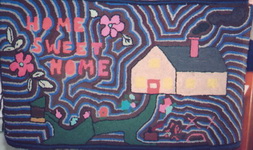 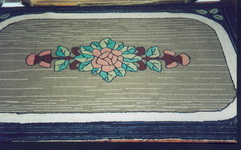
Twillingate Museum and Craft Shop offers a wide selection of hooked mats made by local crafts persons. In addition to the variety of books dealing with traditional rug hooking we also sell patterned burlap and hooking tools. |





